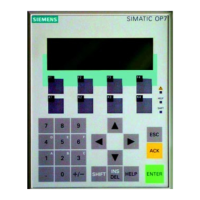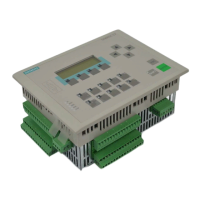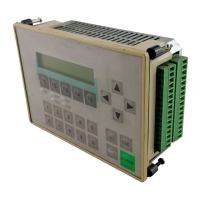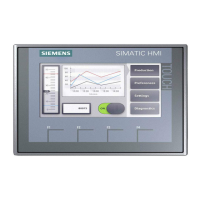4-33
Batch
flexible
, Manual
C79000-G7076-C650-02
Instructions to the operator can be input via the operator instructions register.
Here you can choose whether these should simply display information or
whether they should require acknowledgment. You can also specify the time
when they are displayed. The operator instructions can be displayed at the
operator terminals where batch control is running, before or after the AF
starts or at the end of the AF.
The AF parameters each have a designation, the lower and higher limits, the
value with corresponding unit, an adaption code and the stipulation as to
where the parameters are to be displayed or not. Up to three parameters can
be selected for display in the AF symbol in the diagram (not only at creation
but also during execution). An explanatory text for each parameter may make
inputting easier.
The value must fall within the upper and lower limits (HL and LL). The
limits depend on the standard batch specified in the recipe header, on the
limits for the batch and on the adaptation identifier. The inputs are checked
immediately after you quit the input box. Values which are not permitted
appear as red.
With a user-defined parameter type the value is restricted by a user-defined
type-specific list which can be selected from but not added to.
A $ variable, which must have been defined beforehand, can also be added to
the parameters as a value (see Detailed planning of the recipe header,
Page 4-30).
The adaption identifier is used for specifying parameter adjustment (for
example, for changes in quantity) and can standardly have ’linear’ or
’quadratic’ values. All parameters with ’linear’ and ’quadratic’ are subject to
automatic adaption during control recipe generation.
For self-defined parameter types, adaption cannot be selected since this does
not make sense with discrete value sets. If there are too many parameters to
display (for example, more than 24), a scroll bar is provided.
The procedure for creating your own adaption identifiers is described in
Chapter 9.
An unparametrized AF is automatically assigned the type ’NOP’ and is also
shown thus in the diagram. This AF type does not have a representative in
the PLC. It is processed exclusively within batch control. An AF of this kind
goes immediately into the ready state following activation. This AF type also
makes possible explicit occupation or release of equipment irrespective of
the real automation functions. This means that an apparatus can be reserved
early, for example, or released after a delay. An apparatus now only needs to
be selected in the dialog and, if applicable, the ’Release when AF has done’
box activated. With NOP automation functions, operator instructions can also
be specifed.
Operator
instructions
AF parameters
Inputting values
Inputting the
adaption identifier
Unparametrized
AFs
Recipe creation

